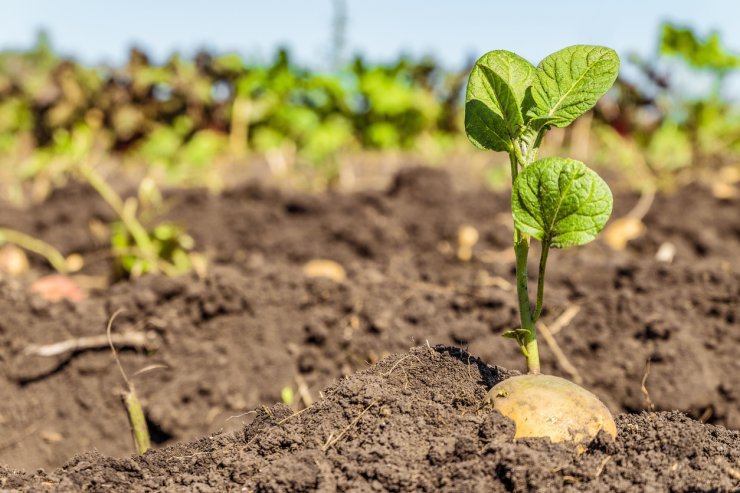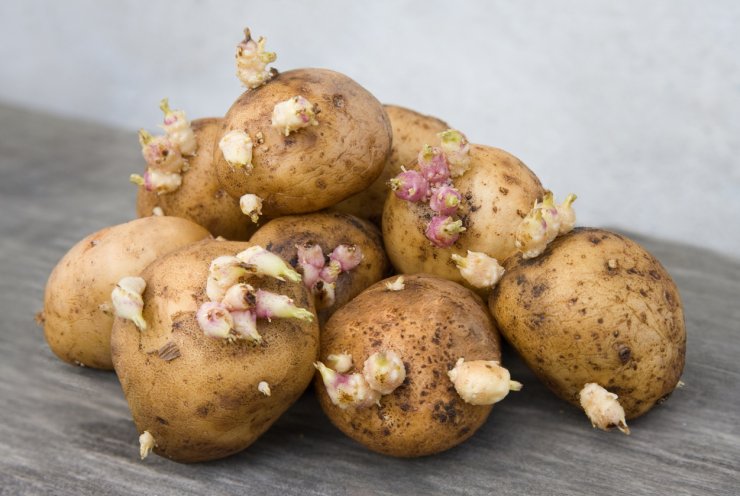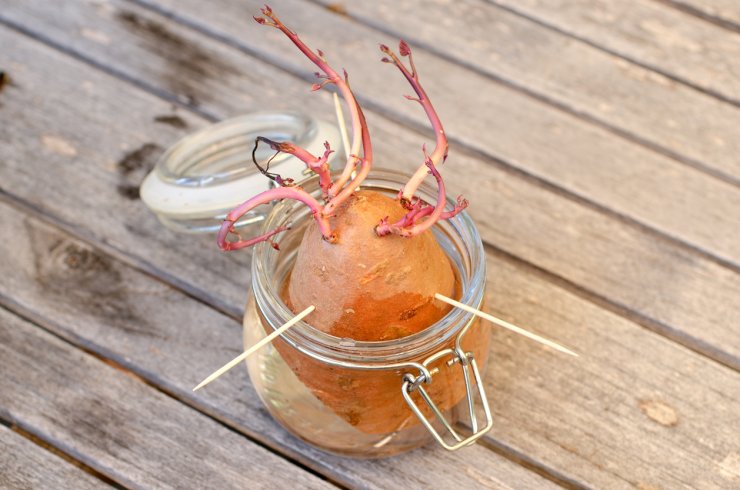
Sprouted potato tuber.
Potatoes

A group of seed potatoes.
Potatoes grow best in regions where the soil temperature is cool, ranging from 45 degrees F for planting and 60 to 70 degrees F for growth. So, if you live in a mild region or one that has a decent growing season between frosts, potatoes may be for you.
You grow potatoes by planting what are called seed potatoes. These are available from garden centers and seed suppliers. Don’t try planting leftover potatoes you got at the market. Commercially produced potatoes are treated to deter sprouting. (If you have a potato from the market that’s started sprouting, it’s probably past its prime—see the previous section on types of potato plants).
When it comes time to plant your seed potatoes, you’ll want them to be about 1 to 2 inches in diameter. If some of your seed potatoes are bigger than that, use a non-serrated knife to make smooth cuts, and cut your seed potatoes into blocky pieces. As a precaution against disease, dip your cutting knife in a 10% bleach solution. Make sure each seed piece has at least one eye; that’s what will develop into the stem of the plant.
If you do have to cut your seed potatoes, store them in a dark humid room for four to seven days before you plant them. This will encourage the growth of scar tissue to form on the cut edge, protecting the seed potato piece from infection when you plant it.
Sweet Potatoes

Growing sweet potato slips.
Sweet potatoes grow best in areas with long, hot growing seasons. But if you’re not in that kind of region, never fear—there are some varieties with shorter maturity rates that are happy in cooler climates. But in general, plan for a growing season of four to five months.
Unlike their [not really] cousins, sweet potatoes are grown from slips. These are plant sprouts that come from the root. You can buy slips from a garden center or extension center. You can also start slips yourself a couple ways. Use toothpicks to suspend a root in a container of water. Or you can cover roots with a couple inches of sand or light soil. Keep the container in a warm spot, and well-watered—but not waterlogged.
Even though potatoes and sweet potatoes tend to grow in different climates (cool vs. warm), if you live in an area that can accommodate both, you have plenty of options.
Have you tried growing potatoes or sweet potatoes? Did you start your own slips, or get them elsewhere? Please tell us how you get your potato or sweet potato crop started ever year.


 Previous
Previous


“Have you tried growing potatoes or sweet potatoes? Did you start your own slips, or get them elsewhere? ”
Where would “elsewhere” be?
I’m in Texas. Would I go to a special grocery store? Is there a potato store online, maybe? HELP!!!
Hi. PLEASE HELP! I am SO interested in knowing this: I have very limited space (tiny property) and my sweet potato vines get out of hand. If I cut the vines back to 3′-4′, will this hinder or aid in the growth & strength of the roots? Will I get larger sweet potatoes or destroy the growth? Please answer this.
Thank you.